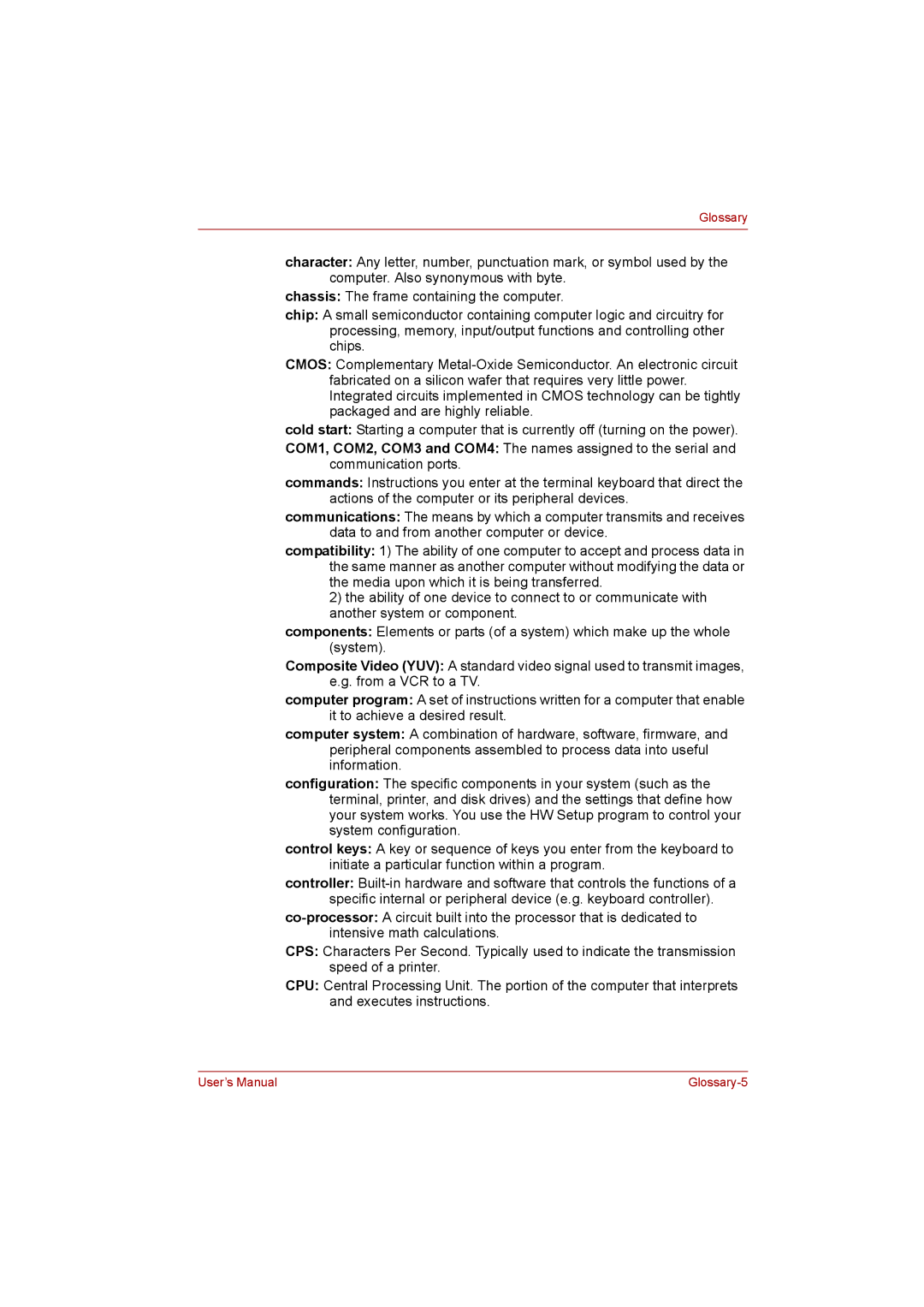
Glossary
character: Any letter, number, punctuation mark, or symbol used by the computer. Also synonymous with byte.
chassis: The frame containing the computer.
chip: A small semiconductor containing computer logic and circuitry for processing, memory, input/output functions and controlling other chips.
CMOS: Complementary
cold start: Starting a computer that is currently off (turning on the power).
COM1, COM2, COM3 and COM4: The names assigned to the serial and communication ports.
commands: Instructions you enter at the terminal keyboard that direct the actions of the computer or its peripheral devices.
communications: The means by which a computer transmits and receives data to and from another computer or device.
compatibility: 1) The ability of one computer to accept and process data in the same manner as another computer without modifying the data or the media upon which it is being transferred.
2)the ability of one device to connect to or communicate with another system or component.
components: Elements or parts (of a system) which make up the whole (system).
Composite Video (YUV): A standard video signal used to transmit images, e.g. from a VCR to a TV.
computer program: A set of instructions written for a computer that enable it to achieve a desired result.
computer system: A combination of hardware, software, firmware, and peripheral components assembled to process data into useful information.
configuration: The specific components in your system (such as the terminal, printer, and disk drives) and the settings that define how your system works. You use the HW Setup program to control your system configuration.
control keys: A key or sequence of keys you enter from the keyboard to initiate a particular function within a program.
controller:
CPS: Characters Per Second. Typically used to indicate the transmission speed of a printer.
CPU: Central Processing Unit. The portion of the computer that interprets and executes instructions.
User’s Manual |
|
